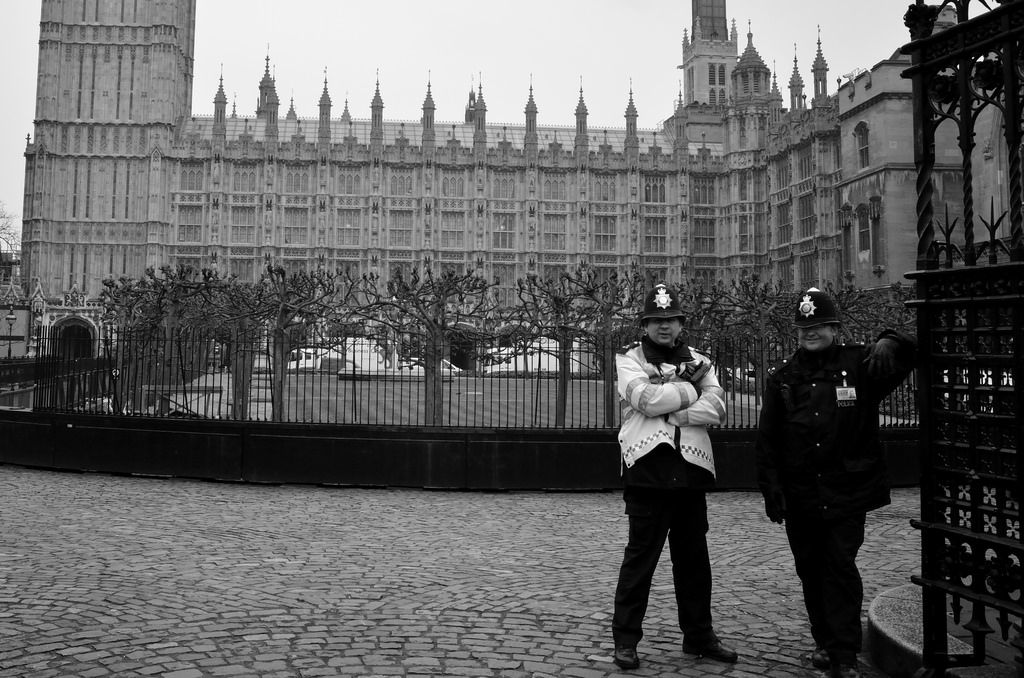Plodding along
When responding to the news that the next spending round would lead to 25 per cent cuts to police budgets, Labour condemned them as potentially “catastrophic” and “a huge threat to the safety and security of the British public”. Elsewhere...
When responding to the news that the next spending round would lead to 25 per cent cuts to police budgets, Labour condemned them as potentially “catastrophic” and “a huge threat to the safety and security of the British public”. Elsewhere the shadow home secretary launched a petition calling for a rethink of the “double figure spending cuts”.
The cuts never happened of course, yet the debate about them almost entirely misses the underlying challenges policing faces. In fact, spending cuts have exposed problems surrounding a police service that has failed to respond to changes in demand and which traditionally has sought to measure efficiency and effectiveness by the number of police officers. As we do not know either the maximum or minimum number of police officers required for the effective delivery of police services, this can prove to be something of a problem.
Increases in police numbers were never subject to evaluation in terms of the impact they had. Yet the evidence suggests that pressures arising from internal administrative requirements now make greater demands on police time than the public are ever likely to do.
The rigidity of employment rules provided for sworn officers fatally undermines any attempt to provide the workforce flexibility that changing demand is placing on police forces. Police officers can’t be made redundant, so pressure has been placed on chief officers to release all those who do not share a similar protection. As a result police community support officers (PCSO) and civilian support numbers have been decimated, with two important consequences.
First, the infrastructure provided by PCSOs to neighbourhood policing is being undermined. Second the major reduction in support staff has led officers being called back into police stations to take on functions previously the responsibility of civilian staff. One unintended consequence of budget cuts has therefore been a significant reduction in ‘visible’ policing. This is not exactly a success story, particularly when the significance of anti-social behaviour is factored in. Here the work of PCSOs has made substantial inroads into this universal problem which is experienced most significantly in the most deprived areas.
However, help may be at hand. Recent work by Her Majesty’s Inspectorate of Constabulary (HMIC) – especially its most recent ‘PEEL: Police efficiency study’ –provides a fresh approach to evaluating police effectiveness. In this report, HMIC show that police forces have a very clear idea about ‘capacity’ (number, costs and ranks of officers and staff) but little clarity about ‘capability’ (workforce skills).
This conclusion arises from the earlier practice of increasing police officer strength on the assumption this would impact on crime by increasing crime fighting strength. This is not necessarily true: for example the recent decline in ‘acquisitive crimes’ like theft, burglary and robbery has taken place against a background of not rising but declining police numbers.
The problem, however, goes deeper than this. As has been officially recognised for over 20 years, crime takes up at most around 20 per cent of police time. The recent discovery that responding to mental health problems in the community takes a similar percentage of police time only serves to emphasise the limitations of this crime fighting image.
What’s more, the fall in acquisitive crime has been more than matched by huge increases in fraud and cybercrime. The recent decision to include these in national crime statistics begins to tell the full story. Yet in terms of police capability this is an unfortunate development as forces have not responded to the changing profile of crime. For example, recent research found just 624 officers investigating fraud and economic crime.
A similar problem arises in relation to local police intelligence. Now seen as the eyes and ears of the community – especially for difficult to reach offences like domestic incidents or child sex abuse and potential terrorist attacks – the departure of PCSOs will be quickly noticed. The significance of this has already been realised in Paris where it has been argued the failure of the police to initiate any dialogue with the Muslim community has shown clear limitations. In London, the Independent of Sunday has reported that PCSOs deployed in the key communities has “reaped an abundance of good intelligence ….”. Yet in forces such as Devon & Cornwall and the Met, current plans involve the entire removal of PCSOs. What HMIC will make of this is difficult to assess. It contradicts, quite fundamentally, its own recommendations and significantly undermines police capability.
The current configuration of personnel within police forces calls for radical reform. It is here that future police proposals from Labour should be directed. This could mean major changes in recruitment, like a major expansion of IT skilled personnel by direct entry, to help the police begin to respond to the growth in cybercrime. It could also reverse current policy by reducing low value, high cost sworn officers and increasing high value, low cost PCSOs. Forces might then confront the crisis in police capability by addressing current problems surrounding a perceived ‘over–capacity’ in police establishment.
